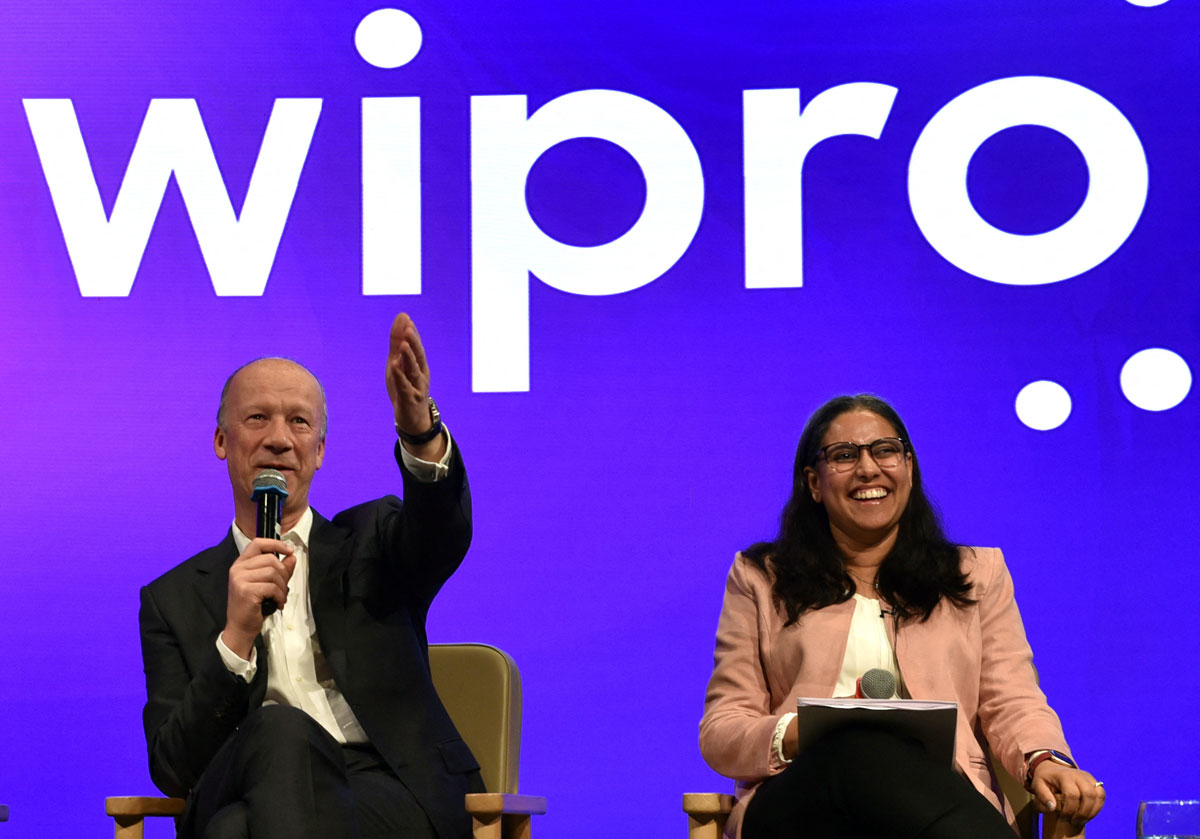Corporate India is starting to step up its capital expenditure plans amid government incentives and signs of rising demand, company executives and analysts have indicated.

This coincides with the Reserve Bank of India (RBI) recently citing a double-digit growth in private capital expenditure.
Healthy balance sheets of banks and corporates, along with increasing capacity utilisation and improving business sentiment, are contributing to a favourable environment for sustained growth in private sector investments, the RBI said in its policy last week.

The private capex momentum is being led by conglomerates such as Tatas, Reliance Industries and Adani group, among others, in areas ranging from new energy and power generation to automobiles and semiconductors.
The Tata group, which has announced plans to invest $14 billion in two semiconductor plants in Gujarat and Assam, is expected to invest up to $120 billion in the coming years across sectors including renewable energy, electric vehicles and power generation.
The Adani Group, between five of its portfolio firms - Adani Green Energy, Adani Energy Solutions, Adani Ports & SEZ, Ambuja Cements and ACC - could invest around $100 billion over the next decade towards achieving energy transition, according to a recent announcement.
Reliance Industries had earlier announced plans to invest up to $10 billion (Rs 83,000 crore approximately) in building the new energy ecosystem.
RIL's capital expenditure for the quarter ended December 2023 was Rs 30,102 crore ($3.6 billion).
The Aditya Birla group firm Hindalco is investing Rs 8,000 crore to set up a 2 million tonne greenfield alumina refinery in Odisha.
Another group firm UltraTech said it would spend another Rs 32,400 crore in the next three years (including the Kesoram buy) to enhance capacity.
In an interview with Business Standard in New Delhi, R Dinesh, president of Confederation of Indian Industry, spoke about green shoots.
Dinesh cited a CII survey to capture the positive outlook on private capex.
The survey conducted across sectors showed that capacity utilisation was in the range of 75 to 95 per cent.
"At 75 per cent, people start looking at investing and at 90-95 per cent, it is necessary for them to invest.
"Cement and steel have already started happening. Green shoots are there," Dinesh said while pointing out that the Indian industry had the strength of balance, resilience and high capacity utilisation.
It is imperative for them (India Inc) to invest, he said, adding that it is not heavy lifting yet because the government continues to invest in infrastructure.
Analysts said around 6 to 6.5 per cent of revenue would be spent by automobile companies on capex in FY25.
"This 6 to 6.5 per cent of revenue number does not include the impact of production linked incentive (PLI) scheme.
If companies see a margin boost from the PLI scheme, their capex plans may improve.
Overall the revenue growth for automobile companies is estimated to be in the range of 5 to 7 per cent and volume growth will be around 6 to 9 per cent in FY25, Shruti Saboo, director of India Ratings and Research, told Business Standard.
India's largest car maker Maruti Suzuki India plans to spend about Rs 1.25 trillion on capex between FY24 and FY31, according to the company.
This is significantly higher than its capex spend of Rs 27,538 crore in the last eight years from FY16 to FY23, a Business Standard analysis showed.
In January, Hyundai Motor India (HMIL), the country s second largest car maker, announced Rs 6,180 crore investment in Tamil Nadu.
This is in addition to the Rs 20,000 crore investment planned in a phased manner till 2032.
HMIL has also acquired General Motors India's Talegaon plant and said it would invest Rs 6,000 crore in Maharashtra.
Investments made so far this year which includes what we have charged out to P&L (profit and loss) as well as what we have spent as capex is around 2.3 billion pounds for Jaguar Land Rover (JLR) and around Rs 6,000 crore for the passenger vehicle (PV), commercial vehicle (CV) and electric vehicle (EV) businesses of Tata Motors, PB Balaji, Group CFO, Tata Motors, said in the third quarter earnings call.
Also, JSW Group, which announced a joint venture with China s SAIC Motor to acquire 35 per cent in MG Motor India, is planning to invest Rs 40,000 crore to set up electric vehicles and battery manufacturing capacity in Odisha.
Indeed, India Inc leaders are optimistic about the next few years being capex heavy.
Overall, for our expansion we need to invest $4.5-5 billion.
So $2-2.5 billion would be invested this year and $2-2.5 billion by 2025, said Amit Harlalka, CFO of ArcelorMittal Nippon Steel.
AM/NS India is in the process of increasing capacity from 9 million tonnes to 15 million tonnes at Hazira, Gujarat, with its total investment at $7.4 billion including downstream.
Other steelmakers including Tata Steel and JSW Steel are also adding capacity with another 38.5 million tonnes per annum.
The new steelmaking capacity is expected to come on stream between the financial year 2024 and 2027, a report by rating firm ICRA said.
While healthcare is attracting private equity investments from overseas in buying local companies, hospitals are also incurring capex to grow organically.
"Some of the recent transactions include Apollo Hospitals Enterprise incurring capex of around Rs 3,000 crore to add 2,000 beds over the next two to three years; Krishna Institute of Medical Sciences planning to double the beds to 8,000 over the next two to three years and Fortis healthcare Limited planning to add 1,400 beds in the next three years among others," India Ratings & Research (Fitch Group) said in a recent report.
Max is set to add around 75 per cent bed capacities by FY27, with two-thirds driven by brownfield expansion, which will enable it to quickly ramp up utilisation of new capacities and achieve Ebitda breakeven in six to 12 months versus 24-30 months for a greenfield hospital.
Among pharma companies, India's largest drugmaker Sun Pharmaceutical plans to incur annual maintenance capex of $200-250 million.
(Inputs from Ruchika Chitravanshi, Sohini Das, Amritha Pillay, Ishita Ayan Dutt & Dev Chatterjee).










